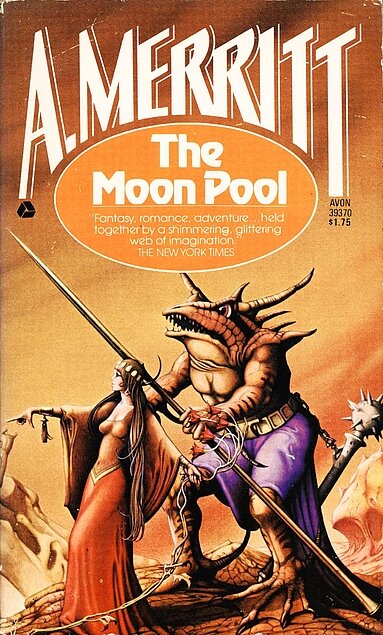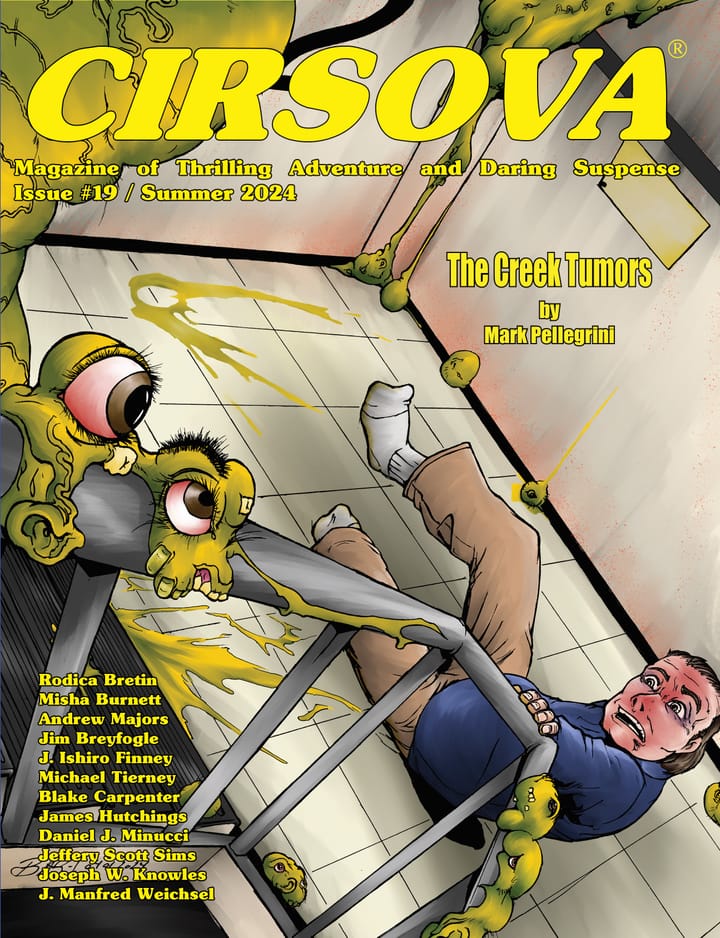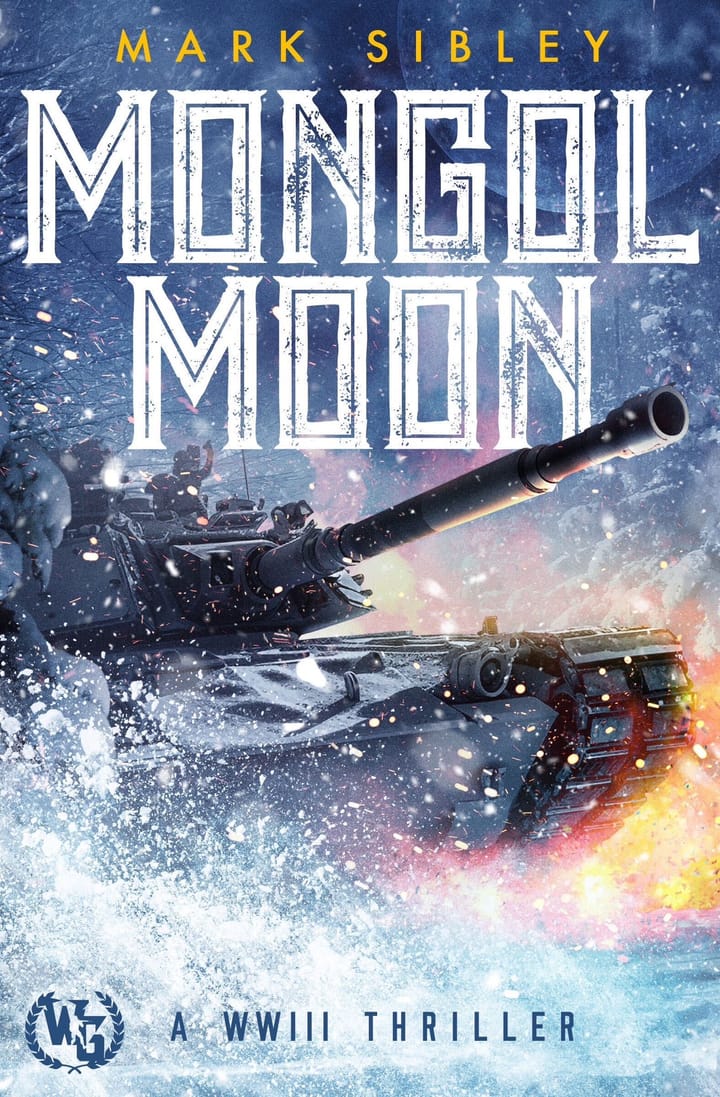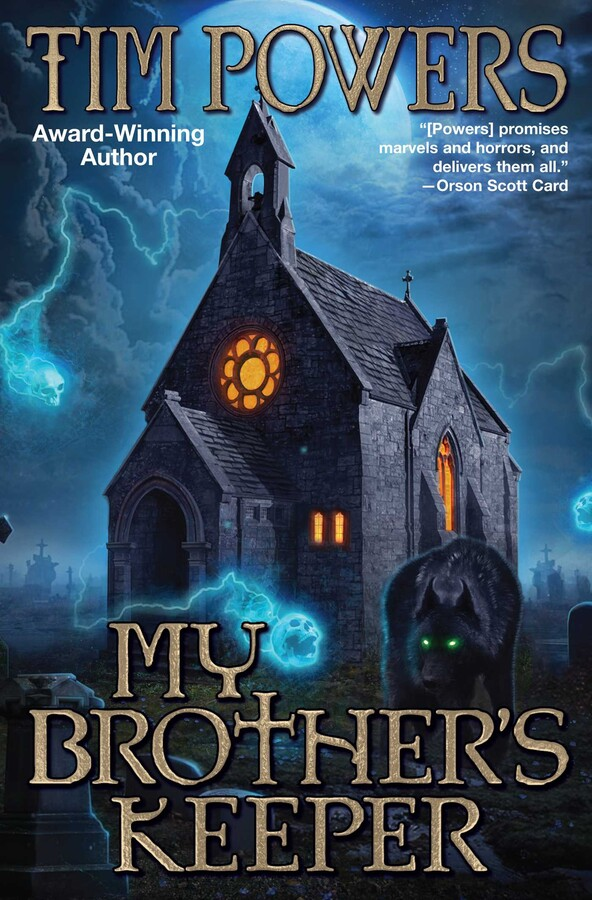The Moon Pool by A. Merritt Book Review
This is another expedition into the past of popular literature. Abraham Merritt, whose byline is nearly always A. Merritt, was a popular author who wasn’t even best known in his own time for his fiction. Rather, he was a celebrity journalist, making enough money to travel widely and pursue arcane hobbies.
The Moon Pool [Amazon link] is the work I usually see cited as typical of Merritt’s work, and it is listed in Gary Gygax’s “Appendix N” as an influence on Dungeons and Dragons. Let’s dive into the Moon Pool and see what happens!

The Moon Pool By A. Merritt First serialized in 1919
The Moon Pool is a lush work of prose. It isn’t quite my style, but I am reminded of something that the late Jerry Pournelle said about Ivanhoe; the point of the long descriptions was to transport people to places they had never been, in a era when you couldn’t immediately find an image of any place you wanted to see. Photography was well established in the 1920s, so that was perhaps less important than in Sir Walter Scott’s day, but nonetheless most of the audience of Merritt’s stories probably had never traveled far from their homes or seen the broad range of environments that Merritt had.
Whenever I delve into a work of this era, it almost always takes me a while to get into the groove with the prose, and not just because of the aforementioned verbose style. With popular works like this, I find that the word choice, phrasing, and background assumptions are just different enough to throw me off. The worst example of this was King – of the Khyber Rifles, Talbot Mundy’s 1916 adventure, which almost lost me in some early dialogue. Since I find the 1911 Encyclopedia Britannica perfectly comprehensible, it clearly has something to do with how formal, academic language changes more slowly than everyday speech.
A stylistic choice I appreciated was that while Merritt did include some amount of science fantasy in the story, the detailed descriptions of the fantastic technologies had been redacted so as not to provide too much information to the Russians. In this way, 1919 was sufficiently like 2020 to help me connect with the story.
![Nan Madol [Nan Matal in Merritt’s story] CT Snow from Hsinchu, Taiwan / CC BY (https://creativecommons.org/licenses/by/2.0)](https://www.benespen.com/content/images/content/v1/51259dfce4b01b12552dad3e/1588254455686-YN2IQ8NLK5VCQUL74JUA/nan_madol_4.jpg)
Nan Madol [Nan Matal in Merritt’s story] CT Snow from Hsinchu, Taiwan / CC BY (https://creativecommons.org/licenses/by/2.0)
The Moon Pool as a story is a lost world adventure, inspired by the monumental ruins of Nan Madol in the South Pacific, which also inspired Lovecraft’s lost city of Ryloth. Merritt’s description of the South Pacific is evocative, and I enjoyed his ability to accurately describe the vast numbers of unusual people who populated the tramp steamers of the day. Out of that itinerant population, Goodwin, the narrator, assembles a band of adventurers [here is where I really see the D&D influence] as he seeks to rescue his friend Throckmartin from the Dweller in the Moon Pool.
The mix in this pulp classic is a little different, as no one knew or cared about the genres we are used to almost 100 years later. There is some cosmic horror, some science fantasy, some romance, and some political intrigue. Merritt pulls all this together into one grand adventure that is very much worth the price of entry. With Hollow Earth style stories like this I find it a bit harder to generate the needed suspension of disbelief, but I also know that this is a time-bound phenomenon, as nothing ages faster than science fiction [even when it is really good]. I’ve read Campbellian scifi from the 50s that was more unbelievable to me, and I know that some of my favorite books now will probably seem a little odd 100 years from now, so I suggest that the effort needed to see someone else’s favorite story with new eyes is worth the effort.
One of the things that got me into reading pulp classics like The Moon Pool was an interest in seeing popular literature from an age where Christian belief was taken for granted, along with an interest in seeing the fictional influences of Dungeons and Dragons in a new light.. C. L. Moore’s short stories in particular struck me as being explicitly Christian, along with Poul Anderson’s works, but The Moon Pool was almost a little scandalous.
At this point I intend to move into spoiler territory, so if you care about spoilers in a 100 year old book, you should skip this part.

Not Olaf Huldricksson, but surely his cousin
What I mean by this is that early on in the book, one of the merry band of adventurers assembled by Goodwin is moved to abandon his Christian beliefs when the Dweller in the Moon Pool steals his wife and daughter. Olaf Huldricksson apostatizes in favor of the warlike gods of his ancestors when a horror from the deep kidnaps his family. I was honestly a little shocked, but it is all comprehensible to me. Merritt’s work is just a little different than Three Hearts and Three Lions, where the mere name of Jesus is enough to send wicked things reeling.
When that doesn’t work for Huldricksson, he turns to Thor instead. I honestly have no idea whether that would have been scandalous to his audience, but it was scandalous to me. However, at the end, Huldricksson gets his revenge, but perishes in the attempt, bringing to mind Matthew 26:52 “Then Jesus said to him, “Put your sword back into its sheath, for all who take the sword will perish by the sword.” And then I wasn’t so sure.
That unexpected complexity is exactly what I came for, and I am happy that I found it. While the The Moon Pool is very much not in the modern style, it is a great read, and worth a look if you’ve never had a chance.



Comments ()